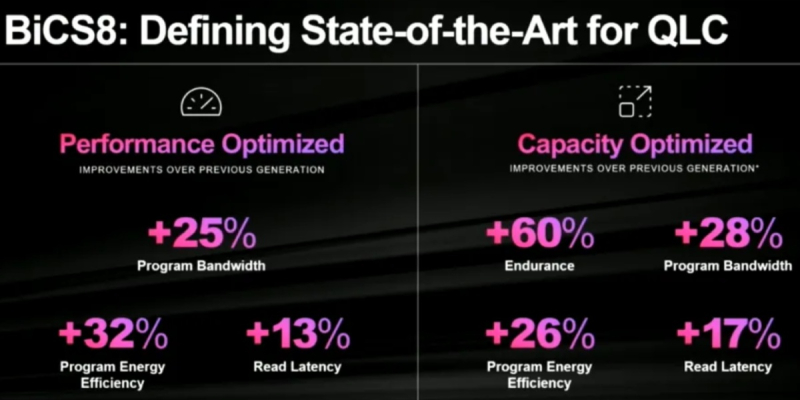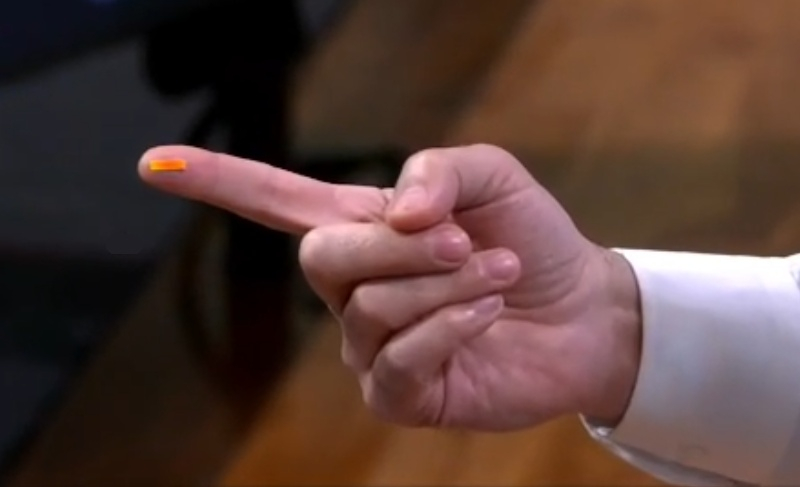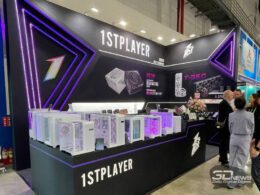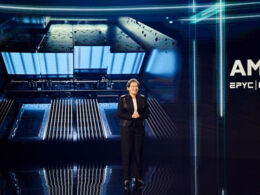Western Digital unveiled the world’s first 2Tb (256GB) 3D QLC NAND memory chip at the recent investor conference. With its minuscule dimensions and high energy efficiency, this revolutionary flash memory has the potential to make a significant impact in the solid-state drive market, thus making the production of faster and larger-capacity SSDs possible. Utilizing the advanced, 218-layer BiCS8 production process, manufacturing this chip ensures compact design and optimal performance.
Robert Soderbery, the General Manager of Western Digital’s flash memory division, expressed his excitement about the preliminary review of the BiCS8 2Tb 3D QLC chip. “We crafted this chip specifically to cater to the requirements of data centers and artificially intelligent data storage systems. I’m eager to share this world’s highest-capacity memory chip with you today, even though its official announcement is set for the near future,” he said.
“It may be more customary to display a plate, but I think it hardly conveys the milestone we’ve achieved,” Soderbery explained. “That’s why I want to show you the chip. In fact, it’s so small that it can fit onto the tip of my finger.”
The 2Tb 3D QLC NAND chip is a prodigious step forward from the base-level 1Tb 3D TLC model that also utilizes the 218-layer BiCS8 manufacturing process. While specific architectural and speed details have not been shared by the company, they did disclose comparative performance and power consumption data.

With the new 2Tb (256GB) 3D QLC NAND chip, manufacturers could comfortably create 1Tb SSDs using just four memory chips. Current technology allows up to 16 chips to be packed into a single casing, signifying a possible 4Tb of storage with the new WD chips in one single module. Therefore, if Western Digital, in partnership with Kioxia, successfully mass-produces the 2Tb 3D QLC NAND chips, the cost of large-capacity solid-state drives could significantly tumble.
Western Digital claims that the density of its QLC chips is 15-19% higher than its competitors, and the new chip is 50% faster and requires 13% less energy per gigabyte of stored data. The official announcement of the 2Tb 3D QLC NAND chip is anticipated in the near future.





